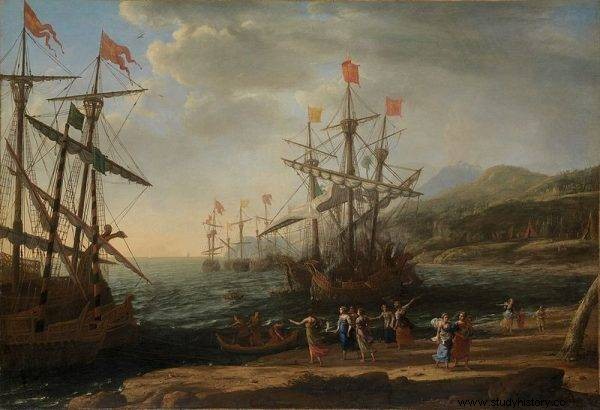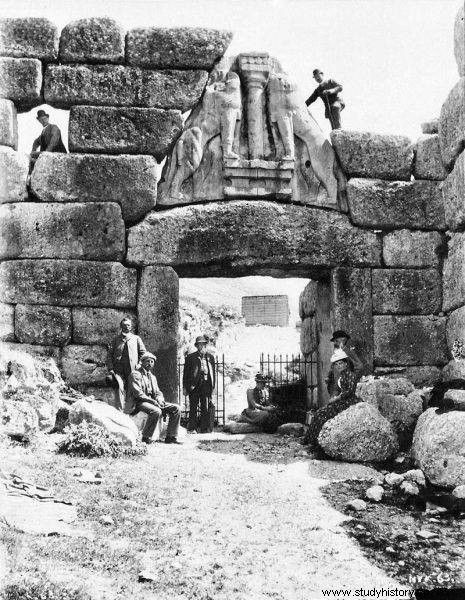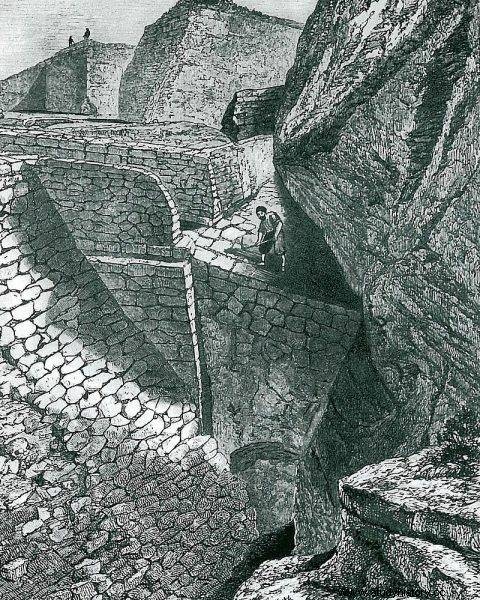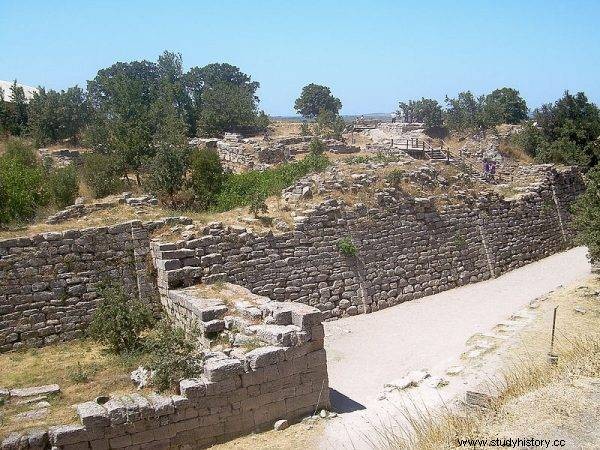The War of Troy is one of the most famous wars in the ancient world. Everyone knows the story of the beautiful Helena kidnapped by Paris, son of King Priam. For 10 years, the heroes fought alongside the gods and died in a conflict caused by the abduction of one woman. How much truth is there in this story? Was the war for Troy really taking place? And how was it with that Trojan horse?
The oldest references to the Trojan War myth come from epics attributed to Homer. Of course, I am talking about the "Iliad" and "Odyssey". The first tells about the dispute between Agamemnon and Achilles, the death of Patrokles and the revenge on Hector. In "The Odyssey" we witness the fall of Troy - including the introduction of a wooden horse to the city.
Epics not so Homeric
It is commonly accepted that the "Iliad" and "Odyssey" are the works of Homer - a poet who lived in the 7th century BC. in Smyrna (today Izmir) in Western Anatolia. But is it true? This issue has not been resolved to this day. There are linguistic differences between the epics, which may suggest that they were not written by one author .
Moreover, these stories were known before as songs or tales. They probably took the form of a coherent cycle only in the times of Homer or later. It was a period when the Greek alphabet was a relatively new creation, derived from the Phoenician alphabet. The knowledge of that time, including stories, was passed on orally. To make them easier to remember and to be sure that they were properly conveyed, they were given the form of songs that had an appropriate rhythm.

Was the war for Troy really taking place?
The oldest written version, consistent with the content of epics known today, dates more or less from the 3rd-2nd century BC. and was done at Alexandria. The myth, however, had already been used by Attic poets such as Aeschylus, Sophocles and Euripides. Scenes from this famous war were also immortalized by painters and sculptors as early as the 6th and 5th centuries BCE
Myth and reality
The Greeks and Romans treated the myth of the Trojan War extremely seriously and considered real events to be true, although there were also those who - like Thucydides - accused Homer of fantasizing and treated his epics as a myth. The Romans took this story further and it was from it that they derived their national epic. After all, "Aeneid" tells the story of Aeneas, who escaped from the burning Troy in order to give rise to this great nation.
Troy, also known as Ilion, was visited by many Roman emperors. During their trips to Asia Minor, everyone stopped in the city to make offerings there. The Emperor Caracala was so concerned with keeping the story alive that decided to recreate in Ilion one of the events of the famous war . During the reconstruction of the games organized by Achilles in honor of Patrokles, he even had his favorite Festus poisoned.

Over time, the memory of Troy's location began to fade. Even in the late Roman period, it was probably not known where this famous city was.
Over time, the memory of Troy's location began to fade. It was probably not known where this famous city was already in the late Roman period. The earthquake in the 6th century also contributed to its destruction. In the Middle Ages, the city itself and its location did not matter much . The myth of the Trojan War began to be transformed and used in various ways, and with the first publication of the "Iliad" in 1488, it found its way into the canon of classical literature.
The myth grew and hardly anyone wanted to believe that it had anything to do with the truth. Until a certain German merchant wanted to find the lost city ...
A wealthy merchant makes dreams come true
Henryk Schliemann was born in Neubukow in Mecklenburg in 1822. His father was a pastor, but he was not a perfect pastor. Because he was prone to alcohol, there was often a shortage of money at home. Henryk lost his mother at the age of nine. Seven years later, Ernst Schliemann was discharged from the church service due to an affair with a maid.

It was the knowledge of Russian that influenced his later career and allowed him to gain a fortune. This, in turn, was used by Schliemann to realize his dream, which was to discover the walls of the mythical Troy.
After the death of his mother, Henryk was taken under the care of his uncle and started studying in a gymnasium. With time, he became a sales assistant, and in his spare time he learned foreign languages. It was the knowledge of Russian that influenced his later career and allowed him to gain a fortune. This, in turn, was used by Schliemann to realize his dream, which was to discover the walls of the mythical Troy.
"Priam's Treasure" and quick identification of the mythical city
Following descriptions from Homeric epics, he set out in search of the ruins of Troy. He found them in northwestern Anatolia in the Hisarlik Hill. In 1870, archaeological excavations began here. The research quickly began to bear fruit.
Already during the third excavation campaign a discovery was discovered which Schliemann called "Priam's treasure" . Its extraction was carried out quickly and without the supervision of the Turkish inspectorate, to which Henry was obliged. Even the workers were dismissed for fear of their greed.
Schliemann then brought to light 8,833 items that were originally placed in a stone box. In interviews with the press, he presented a romantic story in which he was to unearth this treasure with his wife. In fact, however, it was a procedure with which he wanted to persuade his spouse to become more interested in his work.

Schliemann's Excavations in Troy
The discovery of the "treasure of Priam" in the layers of Troy II reassured Schliemann that he had reached the mythical city. So he decided to stop the research and ... move to another place - following another legend. He was also forced to do so by the Turkish authorities, which did not grant him any further excavation license. The reason was a lawsuit for illegal treasure exports.
Back to Troy
Schliemann returned to the study of Troy in 1882, when he began working with Wilhelmen Dörpfeld - a young archaeologist and architect. At that time, he himself did not fully believe that the Troy he had discovered was the city he was looking for.

Walls of Troy VIIA
Dörpfeld searched for archaeological strata containing fragments of vessels similar to those found in the Greek Peloponnese. His research, carried out after the death of Schliemann, proved that Homeric Troy should be found in layers later than Troy II . Most likely in Troy VI and VII. The "Priam's Treasure" thus came from a stratum about a thousand years older than the events described in "The Iliad" and "The Odyssey".
Mythical Horse
The introduction of a wooden horse filled with warriors into the city is a key point in the whole story of the Trojan War. It was thanks to him that the city that was supposed to be impregnable fell. But was it really a wooden horse?
Researchers have long tried to uncover any hidden meanings in this part of the story. One concept, based on the words of Homer himself, that the ships served as horses for the Achaeans suggests that it is not a horse, but the ship that was to lead to the city's ruin.
In Roman literature, in authors such as Pliny the Elder or Pausanias, we find evidence that the Trojan horse was - no less than - a siege machine ; a battering ram to smash the city gate. Yet another interpretation suggests that the Trojan horse concept was merely intended to represent a trick. Such tales were adored in ancient times.
Literature:
- N. Fields, "Troy c. 1700-1250 BC", Oxford 2004.
- M. Korfmann, "Was there a Trojan War?", Archeology, vol. 57, No. 3, May / June 2004.
- "Troy. Henryk Schliemann's dream. Catalog of the exhibition from the collection of the Museum für Vor- und Frühgeschichte in Berlin ", State Archaeological Museum, Warsaw 2006.
